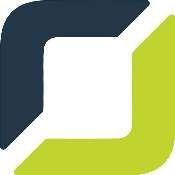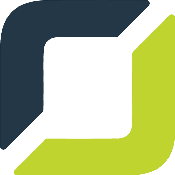Updated on: 3/26/2025
Key Takeaways
- Feature Integration and Automation: Healthcare claims management software must integrate comprehensive tracking, automated billing/coding, and workflow management capabilities while ensuring seamless connection with EHR systems and payer portals, reducing manual effort and errors.
- Compliance and Security: Modern claims management solutions need robust security measures and compliance features (like HIPAA EDI standards), along with detailed audit trails and role-based access controls to maintain data integrity and regulatory adherence.
- Operational Efficiency: Real-time tracking, automated workflows, and customizable features significantly improve operational efficiency, reduce claim denials, and accelerate reimbursement processes, directly impacting healthcare providers’ financial performance.
Choosing the right healthcare claims management software is a key decision for medical practices, insurance companies, and healthcare providers. This software streamlines administrative processes and ensures compliance with regulations, enhances patient satisfaction, and optimizes financial performance.
Today, we’ll examine the key features you should look for in custom healthcare claims management software. From automated processing and real-time data access to comprehensive reporting and robust security measures, we’ll guide you through the key components that can help transform your claims management process, reduce errors, and improve operational efficiency.
Whether you’re upgrading your current system or investing in one for the first time, understanding these features will assist you in making a well-informed choice that is in harmony with the specific needs and objectives of your organization.
Comprehensive Claim Tracking
 Comprehensive claim tracking is essential in custom healthcare claims management software, offering an unparalleled lens into the lifecycle of claims from submission through to reimbursement.
Comprehensive claim tracking is essential in custom healthcare claims management software, offering an unparalleled lens into the lifecycle of claims from submission through to reimbursement.
The significance of real-time tracking in this domain simply cannot be overstated since it brings transparency to the process while empowering healthcare providers to enhance operational efficiency, reduce errors, and even optimize their financial performance.
At its core, real-time claim tracking provides healthcare practices with the ability to monitor the progress of claims at every stage meticulously.
This meticulous oversight is essential for identifying bottlenecks, understanding processing timelines, and ultimately accelerating the reimbursement process.
By having immediate access to the status of each claim, healthcare providers can swiftly address any issues, whether they are related to coding errors, incomplete information, or payer-specific requirements.
One of the pivotal features of comprehensive claim tracking is the monitoring of claim status, which allows users to see in real-time whether a claim has been received, processed, accepted, or rejected by the payer.
This level of detail is instrumental in preventing revenue leakage and ensuring that claims do not fall through the cracks. By having a granular view of each claim’s status, providers can proactively manage their receivables and improve their financial health.
Another important aspect of healthcare claims management software is the tracking of processing times. This functionality offers insights into the duration each claim takes to move through various stages, providing valuable data that can be used to identify trends, anticipate payer behaviors, and set realistic expectations for cash flow.
By analyzing processing times, healthcare organizations can also benchmark their performance and identify opportunities for process improvements. The utility of notification alerts in comprehensive claim tracking cannot be overlooked.
These alerts serve as an early warning system, notifying providers of claim rejections, denials, or the need for follow-up actions. Such proactive notifications enable swift remediation of issues, reducing the time claims spend in limbo and enhancing the likelihood of successful reimbursement.
Moreover, these notification systems are customizable, allowing healthcare practices to set alerts based on specific criteria or thresholds that are most critical to their operations.
Whether it’s an alert for a claim that’s been denied due to a particular coding error or a notification for a claim that’s exceeded a certain processing time, these tailored alerts ensure that practices can prioritize and address issues promptly and effectively.
Comprehensive claim tracking is a dynamic and vital instrument in today’s healthcare sector. Its real-time capabilities, combined with detailed monitoring and alert systems, furnish healthcare providers with the intelligence and agility needed to navigate the complexities of claim management, optimize their billing processes, and secure their financial foundations.
Integration Capabilities
At the heart of integration capabilities is the ability to establish a robust and seamless data exchange between Electronic Health Record (EHR) systems, practice management software, and payer portals.
 This interconnectivity guarantees seamless data transmission across platforms, minimizing the requirement for repetitive data input and diminishing the likelihood of errors.
This interconnectivity guarantees seamless data transmission across platforms, minimizing the requirement for repetitive data input and diminishing the likelihood of errors.
When information from patient encounters in the EHR is automatically transmitted to billing and claim management systems, it accelerates the billing process and enhances the accuracy of claims to improve the likelihood of their acceptance on the first submission.
EHR integration, in particular, is a cornerstone of this process. By directly linking the clinical and financial aspects of patient care, providers can ensure that every billable service is captured and accurately reflected in claims.
This stimulates the revenue cycle and supports compliance with billing regulations, as the documentation in the EHR can be used to substantiate claims if they are audited or reviewed.
Similarly, the integration with practice management software is important since it allows for the synchronization of scheduling, billing, and patient data to create a cohesive system.
The automatic transfer of appointment details to billing and claims systems ensures that every provided service is accurately recorded and billed.
The integration with payer portals is equally essential, facilitating direct submission of claims and enabling real-time eligibility checks and claim status updates.
This direct line to payers expedites the claim resolution process, reduces the time to reimbursement, and provides transparency into payer responses and requirements.
Furthermore, adherence to industry-standard formats, such as HIPAA EDI (Electronic Data Interchange), is essential for successful integration.
These protocols guarantee that the data shared between systems remains uniform, protected, and in adherence to regulatory standards.
Compliance with HIPAA EDI standards supports the efficiency and reliability of data exchange and also safeguards patient information, maintaining trust and compliance in healthcare operations.
Automated Billing and Coding
Automated billing and coding systems represent a revolutionary shift in healthcare financial management by offering a sophisticated solution that streamlines processes, mitigates errors, and upholds compliance with ever-evolving billing regulations.
These systems harness advanced technologies to automate the coding and billing processes, significantly reducing the manual effort and room for human error while enhancing the speed and accuracy of claims submission.
At the core of automated billing and coding is the integration with extensive coding databases. They provide an essential reference for ensuring claims are coded correctly.
The automated system cross-references services documented in patient records with the appropriate codes, reducing the likelihood of coding errors that can lead to claim rejections or denials.
One of the standout features of automated billing systems is their ability to offer coding suggestions. Analyzing the documentation and extracting relevant information lets the system suggest the most appropriate codes to ensure that billing is both accurate and reflective of the services provided.
This speeds up the coding process while also enhancing the accuracy of claims, contributing to a more efficient revenue cycle and reduced denial rates.
Claim scrubbing is another essential function of automated billing systems that involves checking claims against a set of predefined rules and payer-specific requirements before submission. It identifies potential errors or inconsistencies, such as incorrect codes or missing information, allowing them to be corrected proactively.
 By ensuring that claims are clean before submission, claim scrubbing significantly reduces the likelihood of rejections and denials, thereby accelerating the reimbursement process and improving cash flow.
By ensuring that claims are clean before submission, claim scrubbing significantly reduces the likelihood of rejections and denials, thereby accelerating the reimbursement process and improving cash flow.
Customizable workflows within automated billing systems are particularly beneficial for catering to the diverse needs of various medical specialties. Different specialties often have unique billing and coding requirements, and customizable workflows allow these specific needs to be addressed efficiently.
For instance, a cardiology practice may have different coding nuances and billing procedures compared to a dermatology clinic. Automated systems can be tailored to accommodate these differences, ensuring that each specialty’s billing process is optimized for its specific requirements.
Claims Processing Workflow
Claims processing workflow within healthcare financial management is a core component that ensures efficient, secure, and compliant operations.
Workflow management tools designed for claim processing are engineered to streamline each step, from claim creation to submission and follow-up, optimizing the flow of tasks and enhancing productivity.
These workflow management tools are highly configurable, allowing healthcare organizations to tailor the claims processing workflows to their specific needs.
This customization can include defining the sequence of tasks, automating certain steps based on predefined rules, and setting up notifications for specific events or milestones in the claim’s lifecycle.
These tools help minimize bottlenecks and streamline the progression of claims through the system by configuring the workflow to match the organization’s unique processes.
Role-based access controls are a fundamental feature of these workflow tools, ensuring that only authorized personnel can access, edit, or approve claims at various stages of the processing pipeline. This aids in separating duties and minimizing the risk of unauthorized access while ensuring that data integrity is maintained throughout the process.
For instance, a billing specialist may have the ability to enter and edit claim information, while only a manager or a designated approver has the authority to finalize and submit claims.
The audit trails and reporting functions embedded in these workflow tools are key to ensuring transparency and accountability. Audit trails track every action taken on a claim, providing a detailed history of who did what and when. This level of traceability is invaluable for identifying the sources of errors or delays and is crucial for compliance and audit readiness.
Reporting features, on the other hand, offer insights into the productivity and efficiency of the claims processing workflow.
Through detailed reports, managers can monitor key performance indicators, such as the average processing time per claim, the rate of first-pass claim acceptance, or the volume of claims processed by individual team members or departments.
These analyses empower healthcare organizations to pinpoint improvement opportunities, track the effects of procedural modifications, and refine their operations for enhanced financial outcomes.
The Leaders in Custom Healthcare Claims Management Software
 As you can see by now, the sophistication and efficacy of healthcare claims management systems are pivotal in enhancing the overall operational efficiency and financial robustness of healthcare providers.
As you can see by now, the sophistication and efficacy of healthcare claims management systems are pivotal in enhancing the overall operational efficiency and financial robustness of healthcare providers.
To help your own organization, Orases stands out tall in this domain and showcases exceptional expertise and leadership in developing custom software solutions tailored to the nuanced demands of claims management.
Their commitment to innovation is evident in their ability to integrate comprehensive claim tracking, seamless system integration, automated billing and coding, and efficient claims processing workflows.
With Orases, healthcare providers are equipped with a powerful ally in navigating the complexities of claims management, reinforcing their financial health and operational excellence.
Reach out today to see how their custom medical claims management software can directly benefit your company.





